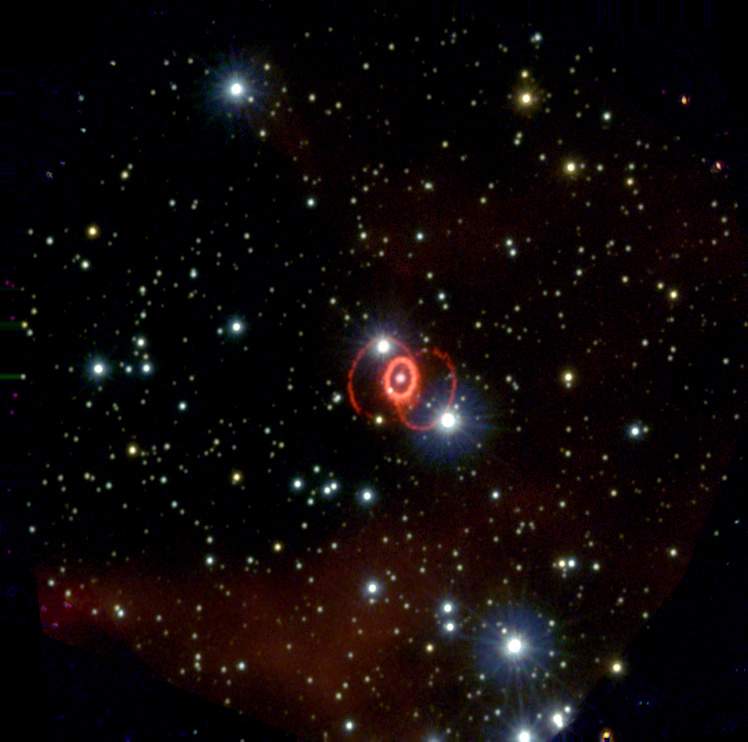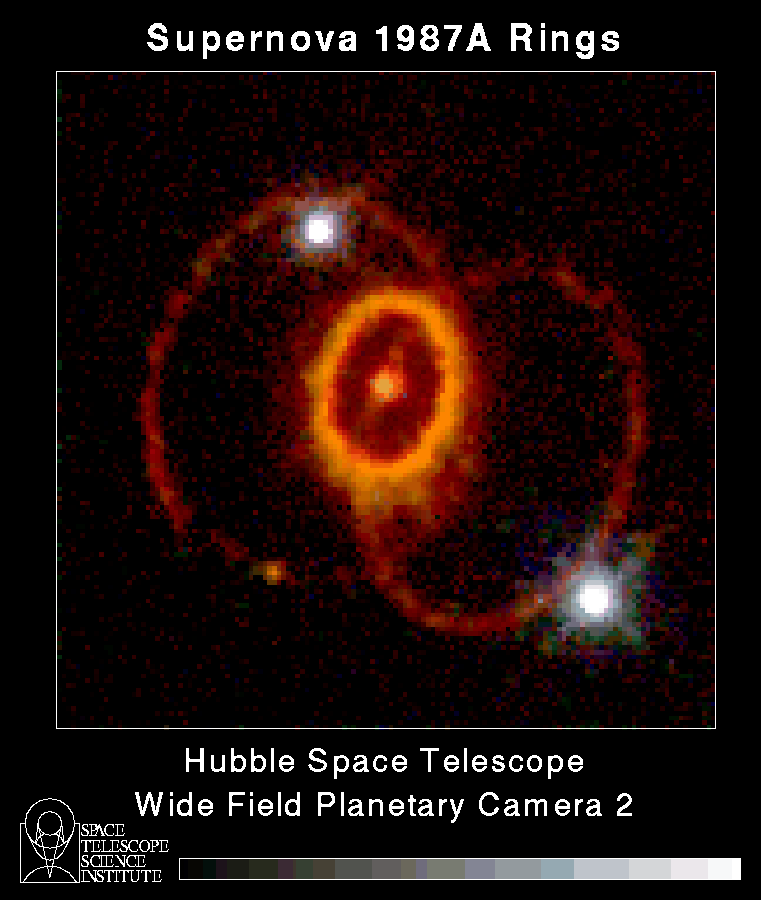One of the most explosive events known is a supernova. At the end of a star's lifetime, when it has run out of nuclear fuel to burn, the centre of the star collapses. When this happens a huge amount of energy is released. This causes a blast wave, which ejects material from the star into space. This material can be seen with telescopes such as the Hubble Space Telescope.
Many supernovae have been observed in nearby galaxies, but they are seen only very rarely in our own due to obscuration by dust in the disc of the Milky Way.
In 1987 a supernova was discovered in the Large Magellanic Cloud, which is a galaxy near to our own. It was called SN 1897A, and was so bright that it could be seen without a telescope.
SN 1987A actually happened 160,000 years ago, but we were
not able to see it until 1987 because it is so far away that its light
takes a long time to reach us.
The pictures below show an artist's impression of what
how a supernova explosion might look from a nearby planet:












ExerciseIn the pictures above you can see the star collapsing, and then suddenly there is an explosion. Debris from the star is hurled into space, and can move up to 30 million metres per second. Eventually all of the material is ejected leaving a small star, called a pulsar, behind. However, we are interested in what happens to the material as it is blown away.The pictures below are of SN 1987A. It is 160,000 light years away.
The above picture shows the supernova amongst other stars in the galaxy. The small, bright, orange ring is the one that we shall be studying, and is all of the material that has been thrown away from the star. The other two rings are caused by radiation. The picture below offers a closer view of the supernova, complete with the rings.
The Wide Field Planetary Camera is the name of the instrument on board the Hubble Space Telescope with which these images were taken.
The picture shown below is a close-up of the ring surrounding SN 1987A.

The width of the image above is 1.5 arcseconds, or 1.5". There are 60 arcseconds in an arcminute, in the same way that there are 60 seconds in a minute.If the size of the image above is 1.5", calculate the radius of the ring in kilometres.
The supernova explosion took place in 1987, and this picture was taken in 1997. Can you work out how fast the material in the ring must be travelling to have got from the centre to the radius that you have just measured?
Give your answer in metres/second.This value is the velocity, v.Do you think that the material is speeding up or slowing down?
Can you explain why?The amount of material that is ejected by the supernova is about ten times the mass of the Sun, or 2x1031 kg. This value is the mass, M.
The equation for kinetic energy
E = 0.5 x Mv2 can be used to calculate the energy of the supernova explosion.
Use this equation to work out the energy of the explosion in Joules.
Finally, see if you can work out roughly how long the energy from a supernova could meet the needs of the 60 million people who live in Great Britain. This is not easy to do, and you will need to make some rough estimates of how much energy you think we use per person every year.

